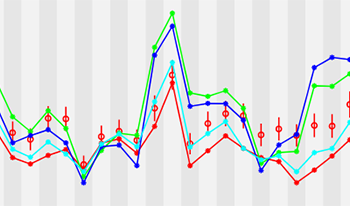Back to articles
Regular Articles
Volume: 1 | Article ID: jpi0111-edi

From the Editor
DOI : 10.2352/J.Percept.Imaging.2018.1.1.010101 Published Online : January 2018
Journal Title : Journal of Perceptual Imaging
Publisher Name : Society for Imaging Science and Technology
Subject Areas :
Views 48
Downloads 10
Cite this article
Bernice Rogowitz, Thrasos Pappas, "From the Editor" in Journal of Perceptual Imaging, 2018, pp 010101-1 - 010101-1, https://doi.org/10.2352/J.Percept.Imaging.2018.1.1.010101
Copyright statement
Copyright © Society for Imaging Science and Technology 2018
The first issue of the Journal of Perceptual Imaging represents a milestone in a thirty-year-old journey. In 1988, a small conference was started as part of the IS&T/SPIE Symposium on Electronic Imaging, dedicated to building research bridges between vision scientists and imaging scientists. Over the years, the Conference on Human Vision and Electronic Imaging (HVEI) grew into a premier venue for multidisciplinary research at the intersection of human perception, cognition and aesthetics, on one hand, and the expanding world of devices, algorithms, and technologies for imaging.
The Journal of Perceptual Imaging (JPI) emerged from the HVEI community, as an archival journal dedicated to publishing multidisciplinary papers covering a wide variety of topics and approaches. This is an open access journal, peer reviewed by researchers who understand that multidisciplinary research often transcends the boundaries of individual disciplines. An engineering journal may reject a paper outright because it doesn’t include an algorithm; a perception journal may reject a paper because it doesn’t advance fundamental theory. The Journal of Perceptual Imaging expressly welcomes research at the intersection, whether it is theoretical experimental, computational, or a state-of-the art survey.
The world of imaging applications continues to grow. Visualization, virtual, and augmented reality open new doors for enabling human decision-making and problem solving, providing a front-end to an expanding world of data and algorithms. Imaging solutions are ubiquitous, requiring increasingly more sophisticated measures of image quality and quality of experience. New types of algorithms, from computational photography, computer vision, and machine learning, are increasingly influenced by human information processing. The fine and applied arts not only inspire new engineering solutions, but are increasingly integrated into our color palettes, multi-sensory representations of data, and immersive environments. The Journal of Perceptual Imaging was created to provide a publishing forum for research about how we perceived and interact with the information produced by these systems, from detection, to attention, to memory, to emotion, to aesthetics. And, it was created to provide a forum for exploring how knowledge about human perception and cognition can inspire new innovations.
We are proud to present our first issue. These first six papers are largely vision-based, but future issues will move into higher-level perception, cognition, and art. The first article provides a concise model for human spatial/temporal perception. The second explores how knowledge of human visual processing can augment computational photography. The third looks at the perception of texture and structure, and their role in image quality judgments. The fourth expands models of image quality to address a practical application. The fifth explores color modeling in augmented reality environments. And the final paper in the set examines how image compression takes into account the color filters of people with color deficiencies.
∙
Andrew B. Watson. The Field of View, the Field of Resolution, and the Field of Contrast Sensitivity.
∙
Shida Beigpour, Sumit Shekhar, Mohsen Mansouryar, Karol Myszkowski, and Hans-Peter Seidel. Light-Field Appearance Editing based on Intrinsic Decomposition.
∙
Suiyi Ling, Patrick Le Callet, and Zitong Yu. The Role of Structure and Textural Information in Image Utility and Quality Assessment Tasks.
∙
Carlos Andres Arango Duque, Mekides Assefa Abebe, Muhammad Shahid, Jon Yngve Hardeberg. Color and Quality Enhancement of Videoconferencing Whiteboards.
∙
Lili Zhang, and Michael J. Murdoch. Color Matching Criteria in Augmented Reality.
∙
Joschua Thomas Simon-Liedtke and Ivar Farup. Multiscale Daltonization in the Gradient Domain.
We welcome you to the Journal of Perceptual Imaging.
 Find this author on Google Scholar
Find this author on Google Scholar Find this author on PubMed
Find this author on PubMed